
views
Arranging Furniture

Determine the function of the living room. Take some time to think about the main function of the living room. Do you have kids that need space to play? Do you plan on hosting a lot of parties? Does your living room have a large window with a great view? The function of the room should be the main influence in how you design it. If your living room has a natural focal point, such as a fireplace or a view, consider designing around it. Face the seating towards the focal point so that everyone in the room has a clear view. Add rotating armchairs so you can easily adapt the room to a space for entertaining. If there isn’t a natural focal point, decide how to create one. For example, you can use a large piece of furniture, a brightly-colored wall, a piece of art. Some living rooms are large enough to split into two or more areas. If you have a large living room, and you need a space for kids to play, consider devoting a part of the room to a play area. Use a coffee table or sofa to create a natural divide between areas.
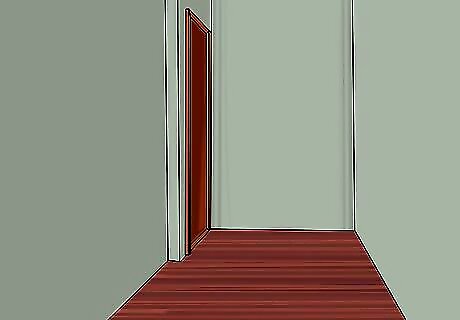
Keep the entryways clear. Avoid putting furniture too close to an entryway. Guests entering the room should have plenty of clearance. Keep plants and other room accents away from the entryways as well. You don't want your guests to have to fight past anything to enter the room. Leaving clearance around the entryway also makes the room more inviting.
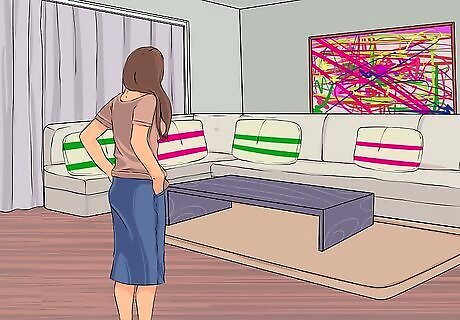
Make sure you can walk around the room. Arrange your furniture so that guests can walk around the conversation rather than through it. When designing the living room, you have complete control over how guests will move through the room. Sim to leave 3 feet (0.91 m) of space between furniture and walls so people can easily walk through the room. Pay attention to any doorways in the living room. Don’t put furniture in front of a door, even if it’s not usually used, as this creates an awkward feeling. If you have one doorway along a wall, then group your furniture in the area along the opposite wall. Two doors across from each other create a natural divide in the room, allowing you to split the room into 2 distinct areas. If you have several doorways to work with, you can split the room into multiple areas, each with a specific emphasis.

Design to fit the size of the room. If you have a small living room, try not to cram too much into it. If you have a large living room, you may be struggling with how to use so much space. Choose furniture that is proportionate to the space and colors that are appropriate for the scale of the room. For example, don’t fill a small room with large, dark furniture. Pick smaller, light-colored pieces instead. Think about the emphasis of the room and how much space you have to work with. If you need extra seating in a small space, consider a combination of floating chairs and sofas. Being able to move the chairs allows you to remain flexible. If you have a lot of empty space in your room, incorporate it into your design. A big open room can be welcoming. Whatever you do, keep the room balanced.
Lighting the Room
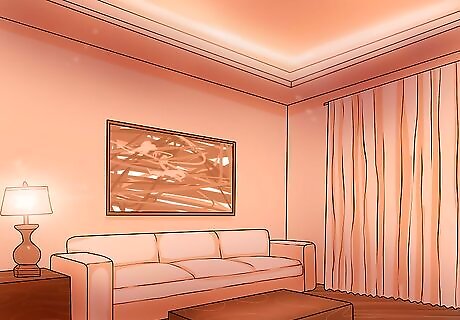
Create layers of light. Aim to use as much natural light as possible. However, don't rely on a single source of light to light your living room. Try to blend several layers of light from multiple sources. Use a combination of ceiling lights, table lamps, sconces, and floor lamps to achieve balanced lighting in your living room. Pay attention to the corners. If you have a lamp in one corner, position two more in the room to try and balance the light. Use tall lights and long drapes to give the impression of a higher ceiling.
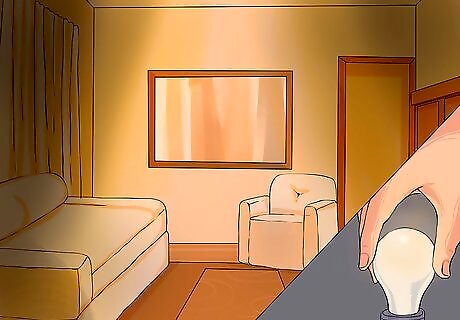
Install a dimmer. Dimmers give you the opportunity to change the feel of the room whenever you like. If you like to host parties, you can use your dimmers to create a flattering light. Choose LED bulbs that provide bright white light and dim them as needed. Dimmer switches can extend bulb life and conserve energy. Consult an electrician if you want to add dimmer switches to your lights.
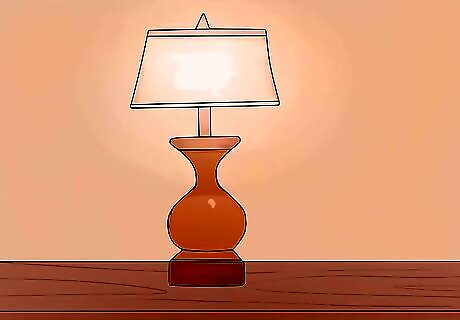
Make the lights fit the function of the room. If you plan on watching a lot of T.V. in the room, make sure your lights aren't going to cause a glare. To make the room more suitable for winding down, keep the light low. Certain areas of your living room may be devoted to a specific task. Put a lamp on your desk if you work in your living room. If you have a reading chair, position a lamp nearby.
Adding Accents and Decor

Hang a mirror to open up a room. If you want to increase the visual space of your living room, consider adding a mirror. This works especially well for smaller living rooms. If you have a shortage of windows in your living room, use mirrors to open it up. Try situating the mirror across from a window to give the illusion of two windows. Be strategic when placing mirrors—hang them at eye level so they reflect your furniture, artwork, and so on.

Get a large rug. Rugs can make a room a lot more comfortable, as long as they're used in the right way. Make sure you get a rug that is nearly as big as the seating area. If a rug is too small, it can make the room feel smaller and disconnected. Keep the edges of the rug away from entryways or walkways to prevent your guests from tripping. For large pieces like sofas, put just the front legs on the rug.

Make use of wall space by hanging art. Buy some original artwork to add some life to your living room. Go to art shows and find a piece that makes you feel something. There are a lot of stores that sell mass-produced prints of simple pieces. Use these if you find a piece that has some meaning to you, but try to avoid filling your home with a bunch of store-bought art. Original artwork doesn't have to be expensive. Check in your area for high-school art shows. You may find some pieces you like at a reasonable price. For a more personal touch, create a gallery wall of family photographs. Use similar frames and arrange them so they’re aesthetically pleasing. You could even opt to frame only black-and-white photographs. Chip and Joanna Gaines Chip and Joanna Gaines, Remodel & Interior Design Experts Curate your own interior design aesthetic. "Filling a room with the things you think you should because you’ve seen someone else do it that way, or because you just want it to feel finished, will never yield a home you truly love. You can make a room feel both beautiful and complete without filling every corner and surface with a bunch of random stuff."

Add plants to the living room. Indoor plants help purify the air in your home, and they make a room more inviting. Use potted plants, hanging plants, or shelves to add some greenery to your living room. Stick with plants that are easy to take care of, such as ferns, succulents, and other houseplants.
















Comments
0 comment